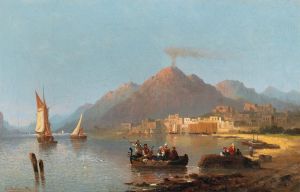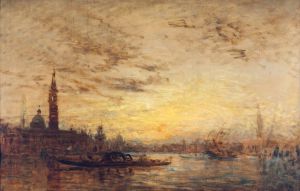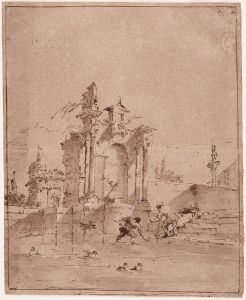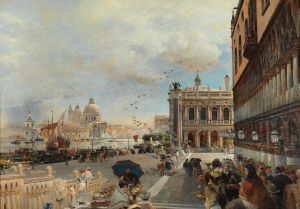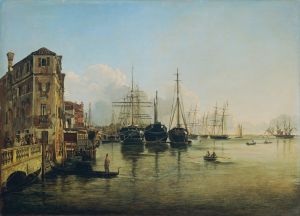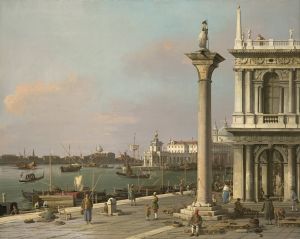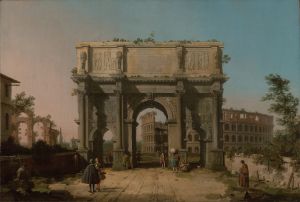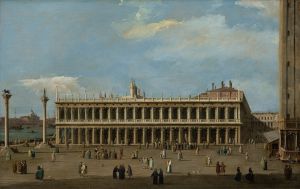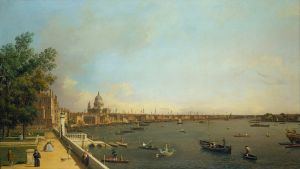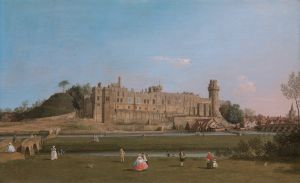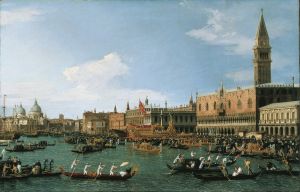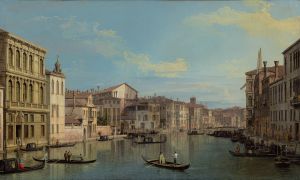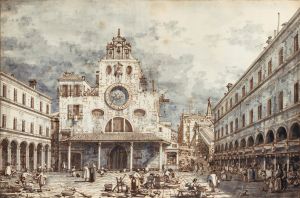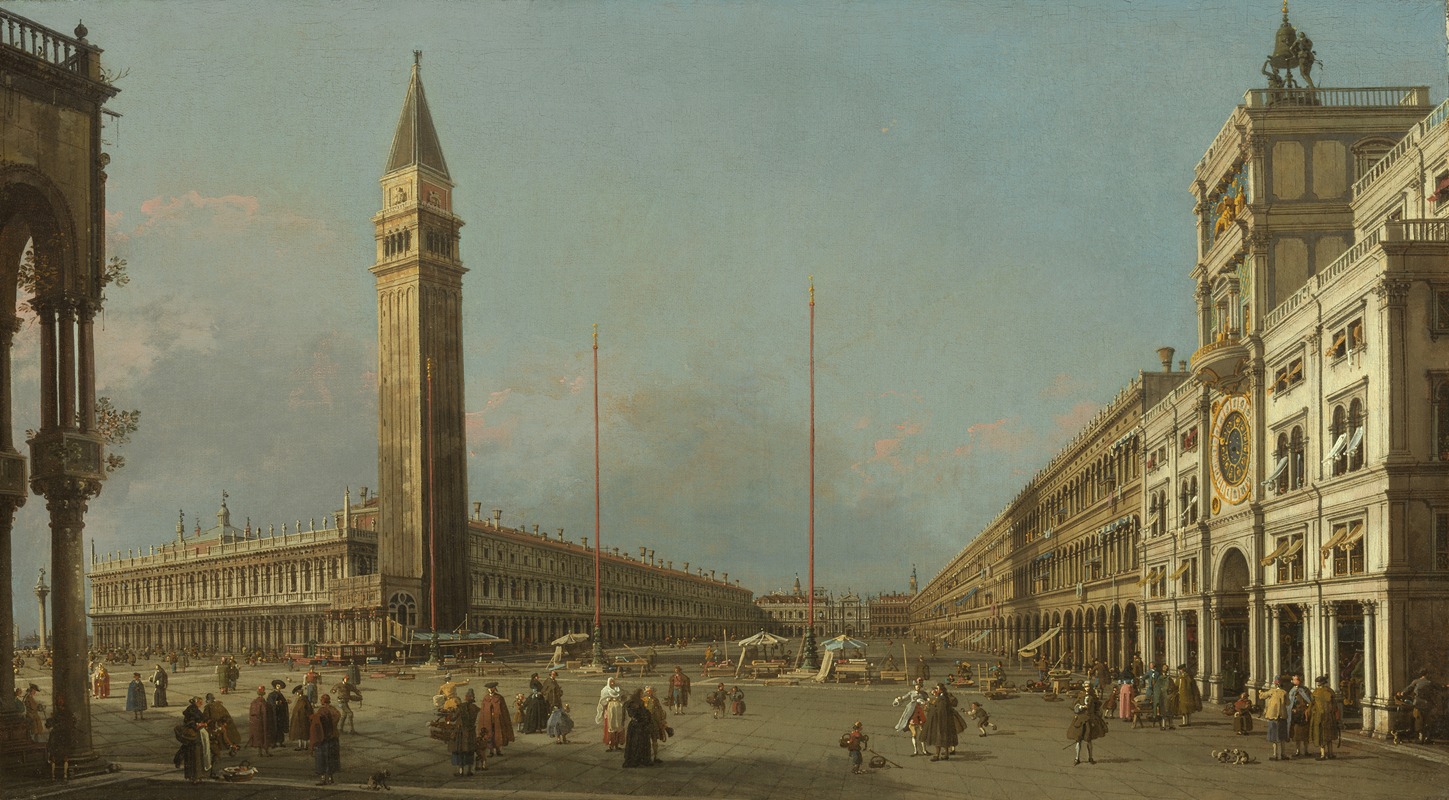
Piazza San Marco Looking South and West
A hand-painted replica of Canaletto’s masterpiece Piazza San Marco Looking South and West, meticulously crafted by professional artists to capture the true essence of the original. Each piece is created with museum-quality canvas and rare mineral pigments, carefully painted by experienced artists with delicate brushstrokes and rich, layered colors to perfectly recreate the texture of the original artwork. Unlike machine-printed reproductions, this hand-painted version brings the painting to life, infused with the artist’s emotions and skill in every stroke. Whether for personal collection or home decoration, it instantly elevates the artistic atmosphere of any space.
Piazza San Marco Looking South and West is a painting by the renowned Italian artist Giovanni Antonio Canal, better known as Canaletto. Canaletto was born in Venice in 1697 and became famous for his detailed and precise landscapes, particularly his vedute, or views, of Venice. His works are celebrated for their meticulous attention to architectural detail and their ability to capture the light and atmosphere of the city.
This painting, created around the mid-18th century, is one of Canaletto's many depictions of Venice's most famous square, Piazza San Marco. The Piazza San Marco, often known in English as St. Mark's Square, is the principal public square of Venice, where it is generally known simply as "the Piazza." All other urban spaces in the city (except the Piazzetta and the Piazzale Roma) are called "campi" (fields). The Piazzetta (the "little Piazza") is an extension of the Piazza towards the lagoon in its southeast corner.
In Piazza San Marco Looking South and West, Canaletto captures the grandeur and bustling activity of the square. The view is oriented towards the south and west, showcasing the architectural splendor of the surrounding buildings. The painting prominently features the Basilica di San Marco (St. Mark's Basilica), with its distinctive domes and ornate façade, as well as the Campanile (bell tower), which is one of the most recognizable landmarks in Venice.
Canaletto's work is characterized by its precise and almost photographic representation of the scene. He employed a camera obscura to achieve the high level of detail and accuracy in his paintings. This technique allowed him to project the image of the scene onto his canvas, which he could then trace and paint over. This method was particularly useful for capturing the complex architectural details of Venice's buildings.
The painting also depicts the lively atmosphere of the Piazza, with numerous figures going about their daily activities. Canaletto often included such human elements in his works to bring the scenes to life and provide a sense of scale. The figures in the painting are engaged in various activities, such as walking, conversing, and trading, reflecting the vibrant social and commercial life of Venice during the 18th century.
Canaletto's paintings were highly sought after by collectors, particularly British aristocrats who were part of the Grand Tour, a traditional trip through Europe undertaken by mainly upper-class European young men of means. His works provided these travelers with a lasting memento of their visit to Venice. Canaletto's reputation grew significantly in Britain, where he spent nearly a decade working for patrons who admired his Venetian scenes.
Piazza San Marco Looking South and West is a testament to Canaletto's skill as a painter and his deep connection to Venice. His ability to capture the essence of the city in his works has made him one of the most important artists of the 18th century. Today, his paintings are held in high regard and can be found in major art collections and museums around the world.





